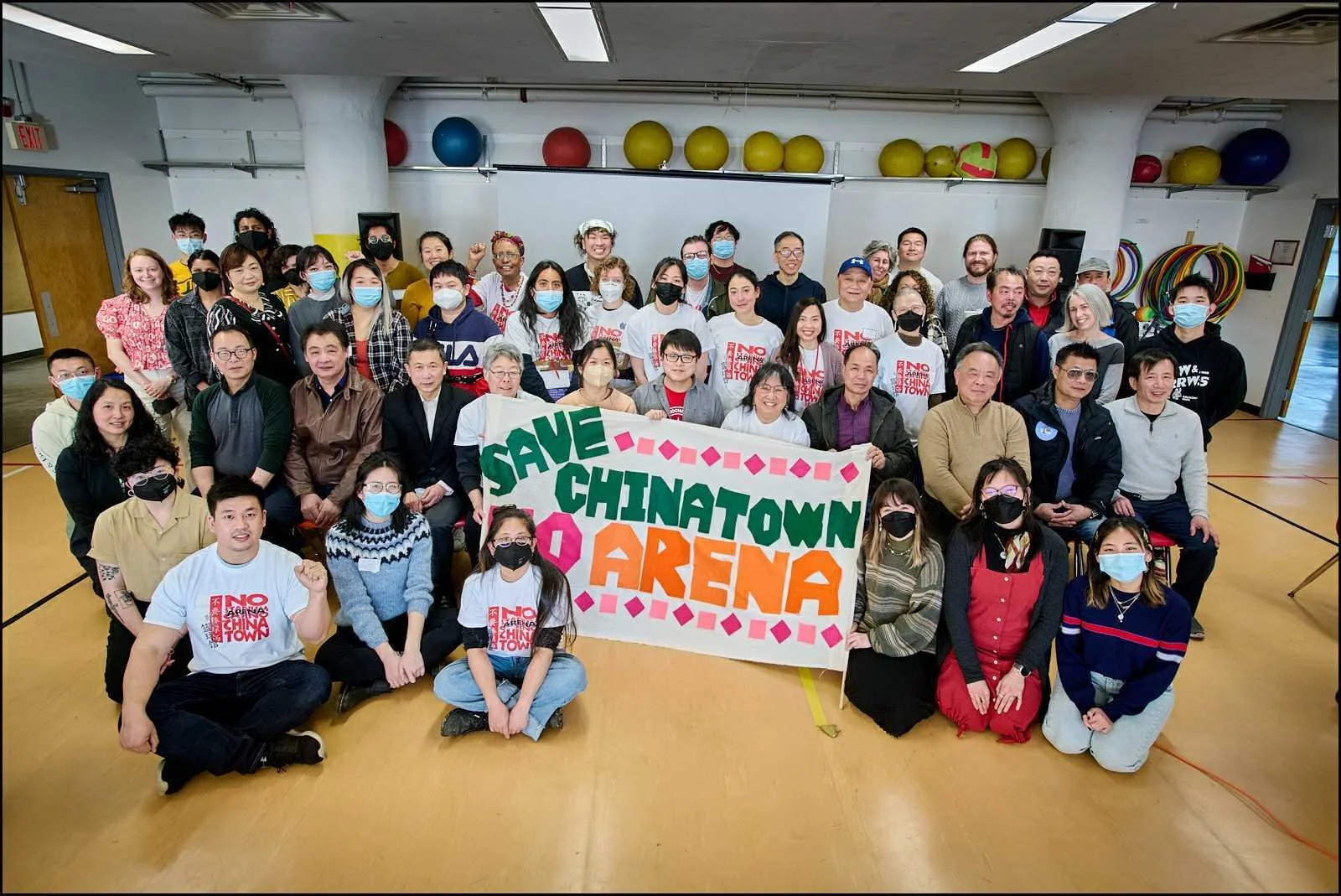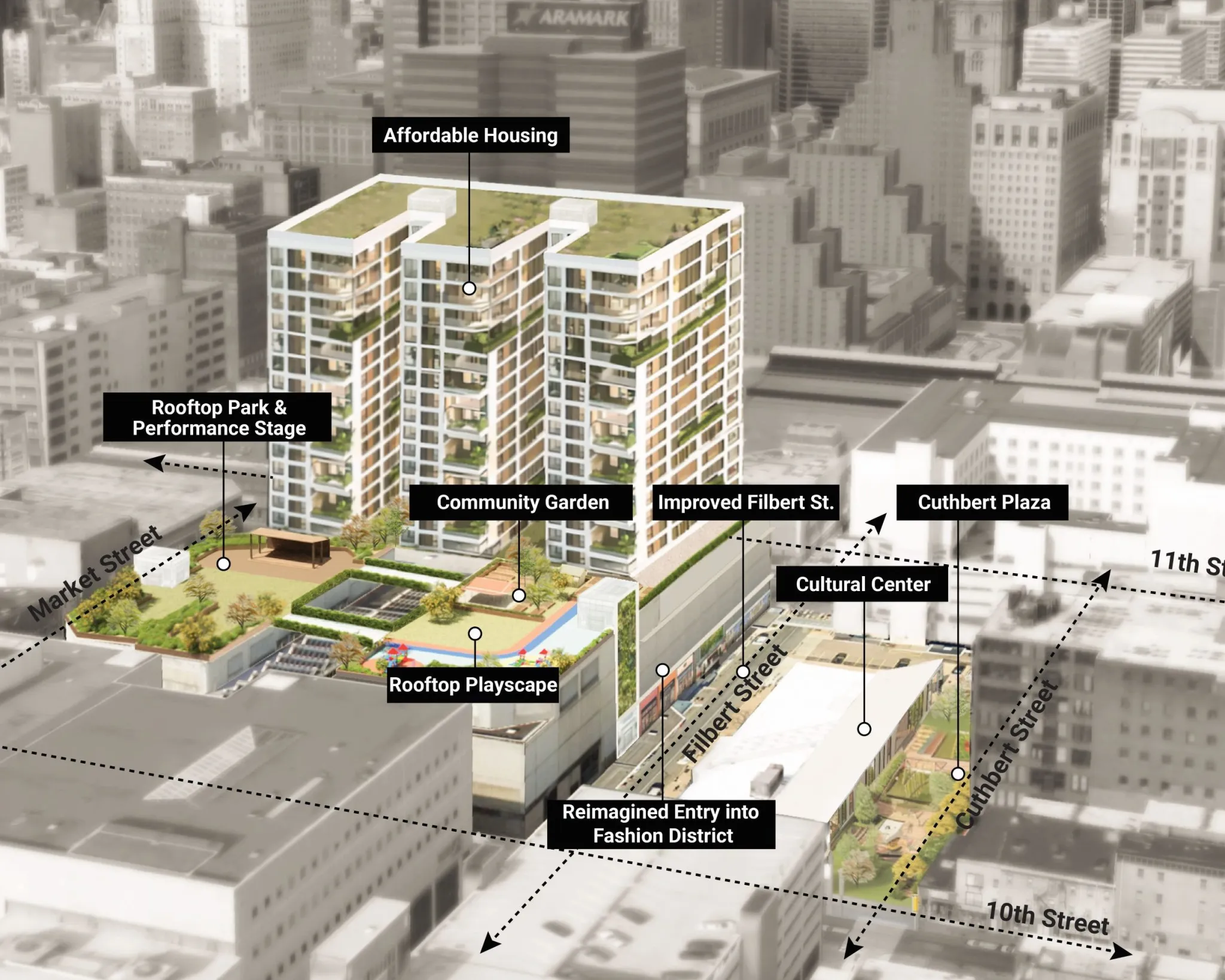Strategy in Action: Anti-Displacement Organizing and Community Research in Philadelphia’s Chinatown
Compared to other major cities on the Eastern Seaboard, Philadelphia stands out as a comparatively working-class city, with lower median wages and median rents than Boston, New York, and Washington, DC. However, Philadelphia also has a much higher proportion of neighborhoods with Elevated, High, or Extreme Housing Precarity, where residents are more susceptible to voluntary displacement and eviction. Three out of four renters (75 percent) live in these areas, compared to about half of renters in the other three cities.
Philadelphia’s housing precarity levels are comparable to those of mid-sized postindustrial Rust Belt cities, such as Pittsburgh (86 percent) and Cleveland (81 percent). As the map below shows, census tracts with Elevated, High, and Extreme housing precarity are spread throughout the entire city, including large swaths of North, West, and South Philadelphia.
However, even residents and small businesses in areas of Philadelphia with fewer at-risk neighborhoods can still face the threat of displacement from high-end private redevelopment. Philadelphia’s Chinatown is a prime example. The neighborhood, a community hub for recent immigrants, non-English speakers, and working-class Asian American families, is located in the Center City business district, which has some of the city’s lowest rates of renters living in census tracts with Elevated housing precarity or above. However, Chinatown and its community members have long been subject to local redevelopment projects that benefit investors and other residents at the expense of locals. In 1991, for instance, construction of the Vine Street Expressway displaced residents and businesses by carving a freeway through the neighborhood and physically dividing valued community spaces.
Over the years, Chinatown residents and other local advocates have helped to prevent other redevelopment projects that threatened to displace more families and small businesses. Among these successful campaigns were efforts to stop plans for erecting a nearby federal prison in the early 1990s, relocating the Philadelphia Phillies’ baseball stadium to the neighborhood in 2000, and building a casino in 2008.
Most recently, local community members and organizers have celebrated the derailment of the plans to construct a new basketball arena for the Philadelphia 76ers at Market East, a nearby shopping district that has declined in prominence in recent years. When the 76ers’ ownership firm, Harris Blitzer Sports and Entertainment (HBSE), announced plans for the complex in 2022, local advocates mobilized in response. Asian American community organizations and activist groups citywide formed the Save Chinatown Coalition, and six of the coalition partners also established the No Arena in the Heart of Our City campaign.

Anti-displacement advocates contended that a sports arena in Center City would fail to generate ample tax revenue, harm small businesses in the area, drive up the cost of living, and force low-income residents out of the neighborhood. These arguments were corroborated by data and market analysis.
Coalition-building was an essential strategy, given the arena developers’ ample resources to advance their agenda. Mohan Seshadri, the executive director of the Asian Pacific Islander Political Alliance (a key partner in both the Save Chinatown Coalition and No Arena in the Heart of our City), notes that HBSE and their allies spent $10 million alone on public relations and spin campaigns. Per Seshadri, the developers had studied previous failed efforts to build new commercial projects in the area and were determined to avoid earlier pitfalls. However, much of the developers’ messaging to Chinatown residents fell short: their promotional materials and community listening sessions were English-only, making them inaccessible to the monolingual Chinese speakers who make up a large part of the neighborhood.
The city council voted to approve the stadium redevelopment in December 2024, nonetheless, following two years of development planning and anti-displacement organizing. However, just one month later, HBSE decided to scrap these plans after reaching an agreement with Comcast (the owner of hockey’s Philadelphia Flyers) on building a mixed-use arena in South Philadelphia.
Vivian Chang, the executive director of Asian Americans United (another key coalition member), considers this change in plans to be a victory, even if the tipping point was an agreement between two corporations. According to Chang, the multiyear campaign to keep a stadium out of Chinatown drew citywide and even national attention to the issue. These efforts shed light on the concerns of working-class Asian immigrants who might otherwise be overlooked due to the common misconceptions of Asian Americans as universally “well-off,” as well as non-disaggregated data that can mask the presence of low-income community members. Chang also notes that many residents who got involved with the campaign were new to civic engagement and found themselves empowered through collective action for the first time.
In addition to organizing against the arena proposal, local advocates also gathered data and insights from community members to advance their own plans for the neighborhood. In June 2025, No Arena in the Heart of Our City published A People’s Vision for Market East, a guiding set of visions and values for a community-centered redevelopment of the beleaguered shopping district. Starting in late 2023, organizers gathered over 2,000 survey responses from local residents, which they synthesized into four core principles: 1) place-based economic development centering local small businesses; 2) an emphasis on social connection and cultural exchange in community spaces; 3) affordable housing consistent with local families’ needs; and 4) building designs that match the surrounding areas and prioritize climate sustainability. Plans for the renewal of Market East—which is still owned by HBSE and Comcast—are unclear as of the time of writing, but organizers in Chinatown have built a solid foundation to push for a people-centered vision in any future redevelopment efforts.

The case study of anti-displacement efforts in Philadelphia’s Chinatown offers many insights, including into the limits of our own data tools. Even as researchers, advocates, and public officials use the Housing Precarity data to identify neighborhoods with heightened risk, it is just as important to work with organizers and residents to identify communities of concern and nuances that are not so easily identifiable in the data.